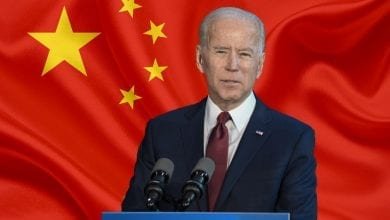Inflation Inches Up in July; More Ahead
The Bureau of Labor Statistics just announced that the Consumer Price Index increased by a modest 0.2% in July. That increased the 12-month inflation rate to 3.2%, a slight increase from the prior month. While the modest CPI number is welcomed, higher inflation is ahead.
The annual core inflation rate, which excludes food and energy, remained at about 5%. The large increase in gasoline prices that we have seen in the last 30 days was not fully captured by this month’s CPI number. That’s because energy prices are usually calculated in the first 10 days of the month.
Because oil-producing nations are cutting back on production to reduce supply and because the China economy is slowly recovering from the COVID shutdown last fall, which will increase global demand, oil prices are rising. Oil prices, which had been in the $70 per barrel range most of the year, are now approaching $85.
That has already pushed up gasoline prices in the US. Currently, the national average for gasoline is $3.82 per gallon. In June gas prices were $3.54 per gallon. That 8% increase in gas prices was not captured in the July consumer price index (CPI) number but will be captured when the August CPI number is released in early September.
Longer-term, inflation will worsen, and it will be very difficult to bring the inflation rate down to the 2% level that the Federal Reserve has set as its target. The primary reasons for that continue to be excess government spending and now the wage-price spiral.
Since fiscal 2019, the federal government has spent $9 trillion more than it collected in tax revenue. That excess demand continues to pull prices up. It looks like government spending deficits will exceed $1 trillion annually well into the future adding to the excess demand.
But rapidly increasing wage rates will have a greater impact on inflation.
Already many large labor unions are striking for higher wages. Actors, airline pilots and now auto workers are seeking extremely high wage increases. Since the large wage increases will greatly exceed productivity, per unit labor costs will rise for business.
To maintain profitability, companies will have to raise prices further. That will increase inflation. That means the country will experience a wage-price spiral — which is very difficult to stop.
While federal spending contributed greatly to the inflation problem, the shockingly irresponsible monetary policy in 2021 and the first half of 2022 also contributed to the inflation problem.
In 2021, with the economy growing at a 6% rate and with the unemployment rate tumbling, the Fed continued its expansionary policy. The Fed kept interest rates near zero for all of 2021 and through the first half of 2022.
Also, during 2021, the federal government deficit spent about $250 billion monthly. The Fed supported this by printing $240 billion monthly to purchase the bonds used to finance the deficit. The low interest rates coupled with the vast increase in the money supply pushed up consumer prices.
Finally, in June 2022, the Fed began to aggressively raise interest rates. It eased up the rate increases this year. That was another mistake that will contribute to the increase in inflation that we will experience in the coming months.
Inflation is a nasty cancer that negatively affects all Americans. Income increases both last year and this year have been below the inflation rate, which means consumers were able to purchase fewer goods and services resulting in a decline in the standard of living.
Many consumers continued to spend beyond their income increases. They did this by using more credit. For the first ever, consumer debt now exceeds $1 trillion.
Our elected officials must act immediately before inflation gets embedded into the economy. Federal government spending must be reduced to at least come close to balancing the budget. The Fed must continue to raise interest rates. The federal funds rate must be increased to at least 6%.
The more difficult problem to solve is the increasing labor costs for business. The United Auto Workers are seeking a 40% wage increase, additional cost of living increases, a reduction in the work week from 40 hours to 32 hours and increased retiree benefits.
Bloomberg estimates that labor costs will increase to $150 per hour for auto manufacturers and add more than $80 billion to labor costs.
The inflation problem must be solved immediately.
Agree/Disagree with the author(s)? Let them know in the comments below and be heard by 10’s of thousands of CDN readers each day!




